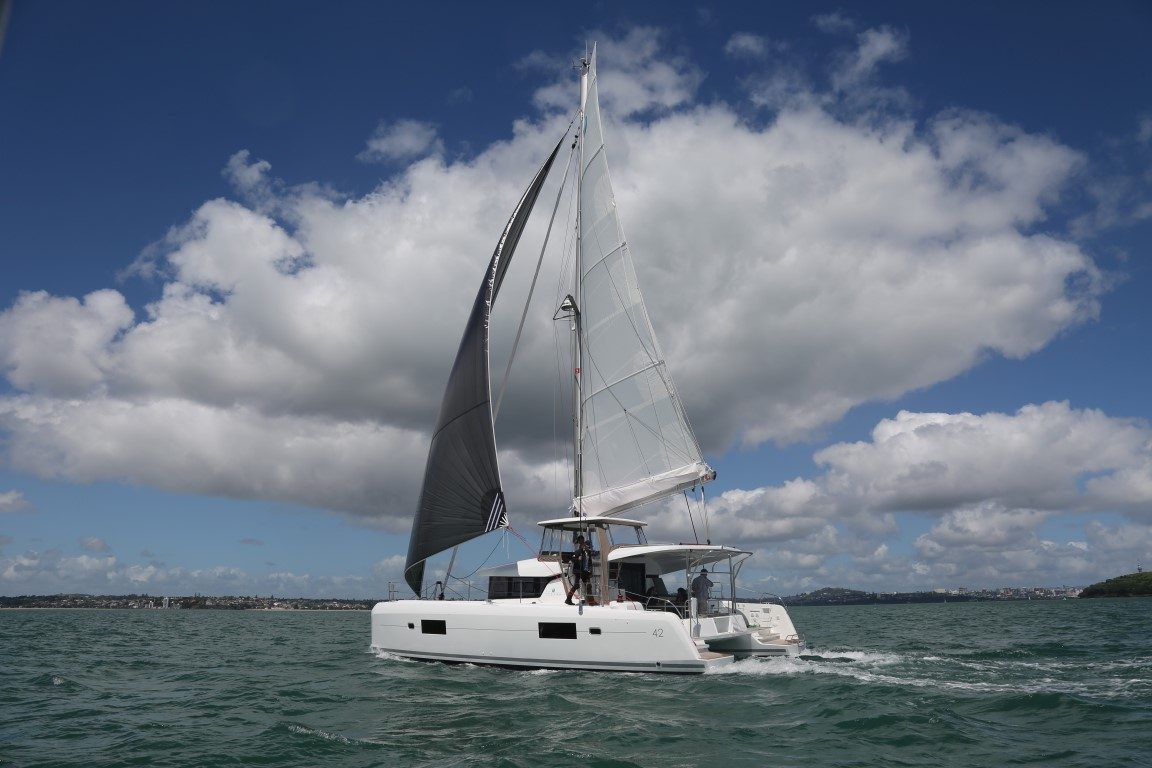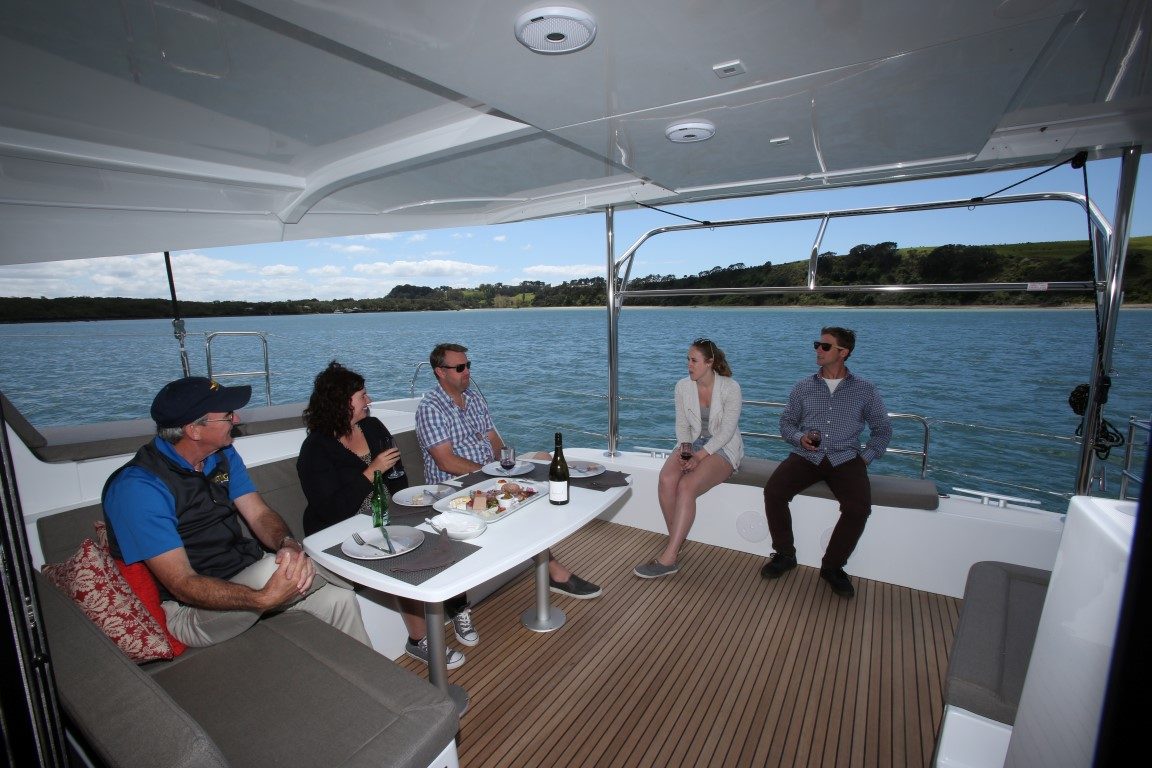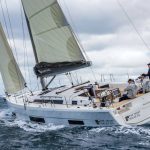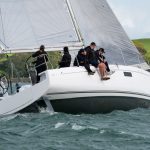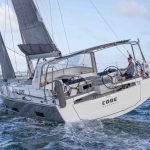‘Behemoth’ is a word which springs to mind or, perhaps more nautically, ‘leviathan’.
- Spacious interior
- Easy sail handling
- Chic and stylish
- Self-tacker on a cat is unusual but works well
- Sheets run to aft end of cockpit
- Cockpit great for relaxing and entertaining



